TP-Link Talon AD7200 Review - Performance and Verdict Review
Performance and Verdict
The fastest consumer Wi-Fi router ever
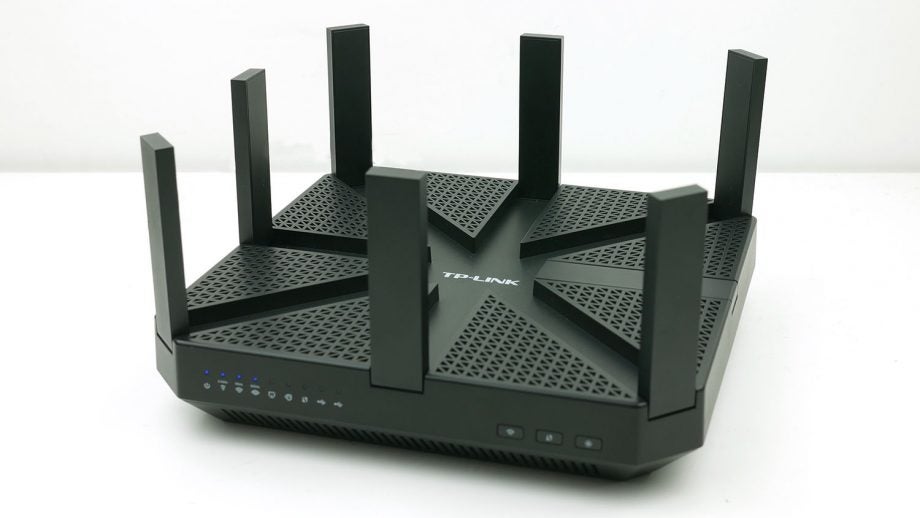
Sections
- Page 1 TP-Link Talon AD7200 Review
- Page 2 Performance and Verdict Review
TP-Link Talon AD7200 – Performance
To test the Talon AD7200, I performed my usual router tests. These consist of checking that the Ethernet speeds are correct then benchmarking transfer speeds over the 5GHz and 2.4GHz Wi-Fi bands, as well as access speed for shared USB storage. I then install the router for a week or so to ensure it remains stable and reliable over a prolonged period.
Wi-Fi tests are performed with the router installed in the front room of a small, three-bedroom, end-of-terrace house, with one laptop attached via Ethernet. Another laptop is then positioned approximately 2m away and connected over Wi-Fi. LAN Speed Test is used to measure the transfer speed between the two laptops.
I then move the second laptop to the rear, ground-floor kitchen, where it’s about 5m away and with one brick wall between it and the router. Finally, I move to an upstairs rear bedroom, where the laptop is approximately 10m away from the router and with two brick walls and one wooden floor in-between.
However, for AD Wi-Fi, all these distance tests are superfluous since the signal simply can’t penetrate even one brick wall. Step through a doorway and out of line-of-sight and the signal stops dead.
As such, I simply measured AD speeds at various positions in the same room, varying my distance between 1m and 4m from the router. I found it was fairly consistent at all positions within the room, so have reported only one result.
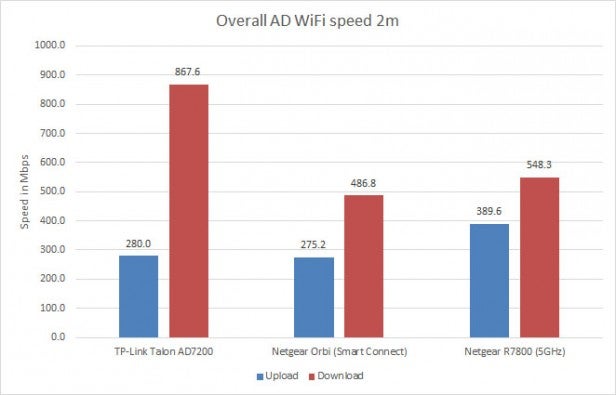
The Talon’s AD Wi-Fi is double the AC Wi-Fi of other routers
The Talon managed an average download speed of 867.6Mbps. That’s an impressive figure that comfortably beats any AC router. However, it’s less than double the speed of the fastest AC routers – which, given the promise of four times the speed, is a touch disappointing.
Crucially, though, it’s perfectly possible that the Gigabit Ethernet ports were indeed holding back maximum performance. Until we’re able to test transfers using two AD-equipped laptop, this is as good as it’ll get.
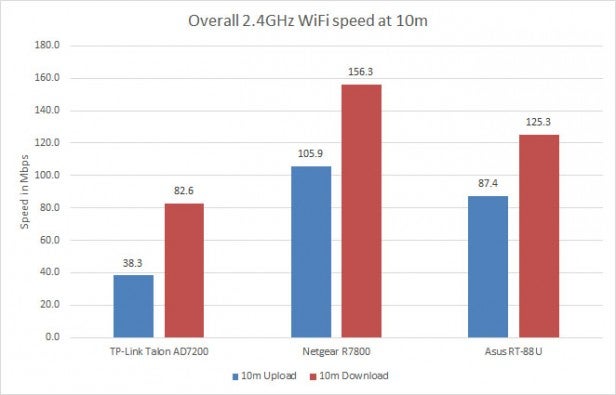
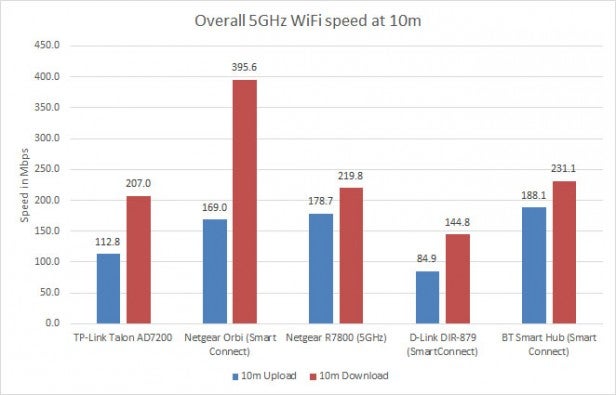
As for AC and N speeds, the Talon was fairly mid-table for both, with several other conventional dual-band routers beating it across the board. Meanwhile, USB speeds were in fact the slowest of the half dozen or so most recent routers I’ve tested, although not by much.
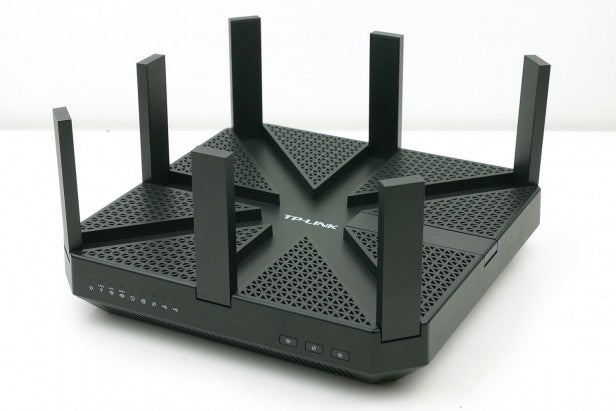
Should I buy the TP-Link Talon AD7200?
The Talon AD7200 lives up to its promise of delivering the fastest Wi-Fi speeds we’ve ever seen, thanks to the presence of 802.11ad Wi-Fi. However, it also makes clear the limitations of this new connection standard.
AD Wi-Fi is completely unable to penetrate even one brick wall and is generally limited in range, making it useful in only a handful of situations – wirelessly backing up large volumes of data and streaming very high bit-rate video being the two obvious ones.
Even then, at present there are no devices that can actually connect to an AD Wi-Fi router. Moreover, when they do arrive, the Talon AD7200 will still be of limited appeal until it can seamlessly switch between the speed of AD and the range of older Wi-Fi standards. Currently, this is a manual operation, and it will quickly become a chore.
As such, with a retail price of £350, the Talon – and likely most other AD routers, if this price is anything to go by – just doesn’t feel remotely worth the money right now. For most users, if you’re going to spend that sort of money, the more practical and convenient approach of a device such as the Netgear Orbi will feel like a better buy.
Verdict
The next generation of Wi-Fi has arrived, and it’s mighty fast. It’s still a bit early for prime-time, though.

